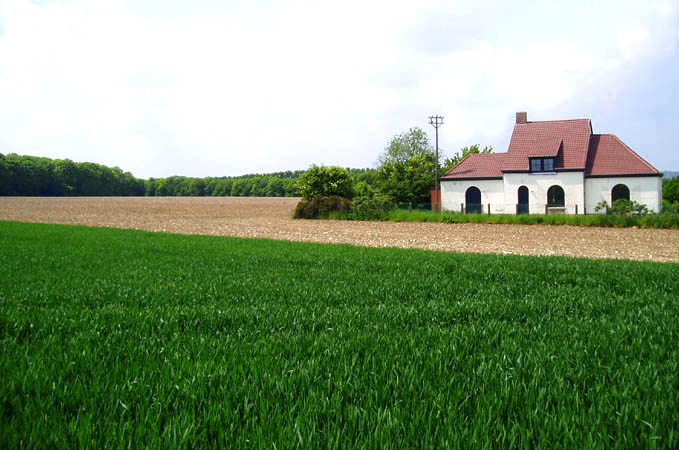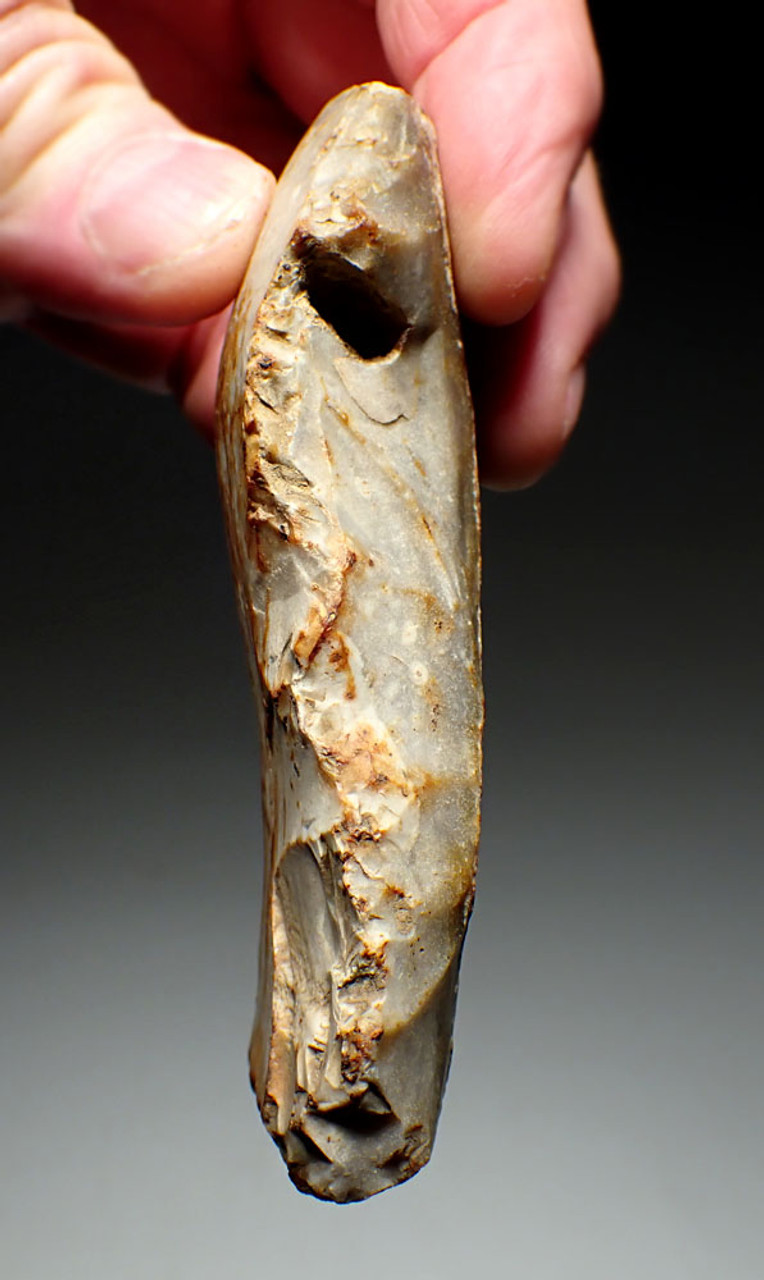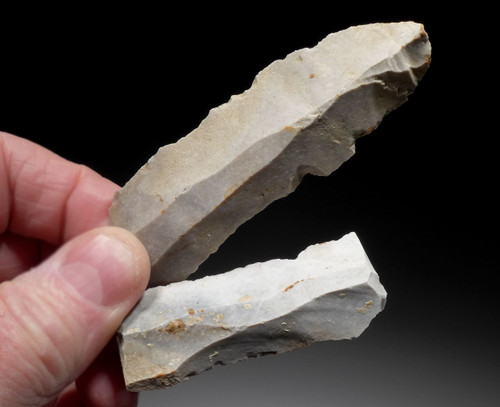Product Description
SEE MORE EUROPEAN NEOLITHIC ARTIFACTS
Collected from the famous Spiennes Neolithic flint mining and trade site, this is a complete and very well made Neolithic flaked flint TRANCHET AXE. The large site is mostly plowed farm land and often, the flaked Neolithic artifacts are damaged or broken by hundreds of years of the farm plows passing over the land as they rise up from the underground layers. This superb example has miraculously avoided any of the typical plow damage. A tranchet axe is a lithic tool made by removing a flake, known as a tranchet flake, parallel to the final intended cutting edge of the tool which creates a single straight edge as wide as the tool itself. The form and workmanship is of the finest type. The chopping edge shows extensive use wear and resharpening down to a blunt edge, indicating it was completely used up, and had been sharpened so many times that the edge ran right up to the original cortex flat face, preventing it from being able to be sharpened further.
The Neolithic site in Spiennes, Belgium was one of the most active and well-known trading centers of the first farming societies of western Europe. The cores from which blades were struck, were mined, prepared and traded from here, to regions all across Neolithic Europe. Since the 1800's, European collectors have been walking the plowed farm fields of the region, surface-collecting flint Neolithic artifacts that are turned over by the farmers' plows each year. Unfortunately, that same plow that allows one to make such a discovery, is also responsible for breaking and damaging the flint artifacts. Finding exceptional and unbroken specimens such as this, has become not as common as it was many, many decades ago.
HISTORY
The declaration in the year 2000 by UNESCO protecting the Neolithic flint mines at Spiennes was highlighted by three main criteria as quoted: "1) The Neolithic mines at Spiennes provide exceptional testimony to early human inventiveness and application, 2) The arrival of Neolithic cultures marked a major milestone in human cultural and technological development, which is vividly illustrated by the vast complex of ancient flint mines at Spiennes. 3) The flint mines at Spiennes are outstanding examples of Neolithic mining of flint, which marked a seminal stage of human technological and cultural progress."
These mines cover more than 250 acres and represent the largest and earliest concentration of ancient mines in Europe! A large diversity of methods were employed to extract the flint by open quarries, pits and networks of underground horizontal galleries. Vertical tunnels range from 30 to 40 feet deep. Shafts were sunk through the chalk layer vertically with galleries radiating out from the shafts. Unique to Spiennes, when the flint was exhausted above the bedrock, the rock layer was penetrated to reach the chalk layer below. This feature shows the mastery these Neolithic humans had of their local geology!
Mines were dug with only the aid of antler picks and bone shovels demonstrating an incredible feat based on the expansiveness of the site. Despite the miners' knowledge to leave pillars in the horizontal galleries for roof support, skeletons of workers have been found in collapsed shafts at Spiennes.
Flint tools from the mining site at Spiennes represent an icon of Neolithic technology, trade and culture. Every collection should have at least one tool from this official 'world-class' site.

FIELD IN SPIENNES, BELGIUM WHERE THESE TOOLS WERE COLLECTED
 US DOLLAR
US DOLLAR
 EURO
EURO
 AUSTRALIAN DOLLAR
AUSTRALIAN DOLLAR
 CANADIAN DOLLAR
CANADIAN DOLLAR
 POUND STERLING
POUND STERLING




















